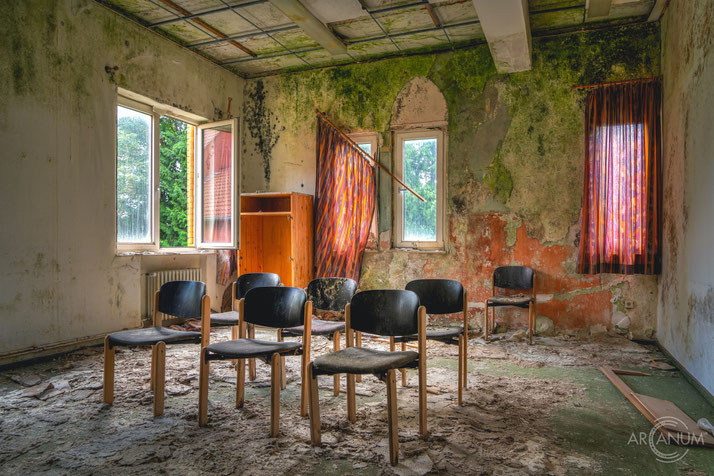The Monastery of Mold
The abandoned Monastery of Mold (officially „Heart of Jesus Mission“) was a branch of the Missionaries of the Sacred Heart of Jesus. Between 1902 and 1969, it served as the starting point for the mission and as a theological training center for prospective priests. The Missionaries of the Sacred Heart of Jesus had settled in near the city of Münster after the end of the "Kulturkampf" (Cultural Struggle), a seven-year political conflict (1871–1878) between the Catholic Church in Germany, led by Pope Pius IX, and the Kingdom of Prussia, led by chancellor Otto von Bismarck.
The order soon needed another training center. Construction finally took place on the outskirts of a village on the banks of the river Ruhr. The order acquired a plot of land there, which originally consisted of 5 hectares of farmland and 5 hectares of forest, and built an imposing building on it. The red brick building was inaugurated in 1902. An original tower was not rebuilt after a fire in 1946.
The training center accepted high school graduates who first studied philosophy and then theology. After completing the five-year course, they were ordained as priests. In 1938, there were 93 students and 18 professors. There were also 10 priests, 12 lay brothers, 6 nuns and some secular staff.
Until 1969, the institution established missions in what is now Papua New Guinea, China, Africa and Peru. Karl Hesse, later Archbishop of Rabaul, was also trained and ordained as a priest here.
The institution's heyday ended in 1939 with the beginning of the Second World War. The building was confiscated and the priests' students were moved to the city of Kleve. Only a few priests and lay brothers remained in the monastery's farm building. The main building became a military hospital. It served as a place of healing and care for soldiers suffering from lung disease. Of the patients, 1300 died in the monastery. They are buried in the nearby military cemetery.
After the war, the house served as accommodation for old and sick people from Dortmund.
Teaching activities also began to be rebuilt after 1945. The associated “Thomas Academy” was able to attract important lecturers. Among them was in 1965 Joseph Ratzinger, who was teaching theology in Münster at the time. The library consisted of around 45,000 volumes. There was also a missionary museum “Treasures of the South Seas”.
The seminary was closed in 1969, and the “old monastery” became a home for difficult children. It later housed an addiction clinic, which ceased operations in October 2009.
In July 2023, the state of North Rhine-Westphalia wanted to place 450 refugees in a central accommodation facility in the building. These were supposed to be refugees who were to be redistributed after several weeks. Refugee helpers and villagers were very critical of the plan and felt that the village was being overburdened. The owner finally declared that there would be no accomodation facility.
Visited: August 4, 2020
Location: Undisclosed, Germany
Status: Abandoned / Possible Renovation













































